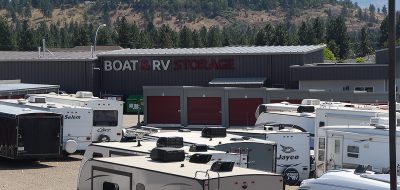 Locking fuel caps have gained in popularity recently, driven in part by the rapid rise of the cost of fuel. Many motor coach owners believe that installing such devices may in fact lead to other issues if their rig is subject to fuel theft. So, is purchasing and installing these fuel tank security devices the way to go? Is the jury still out? According to many, no. So let’s look at the arguments on both sides.
Locking fuel caps have gained in popularity recently, driven in part by the rapid rise of the cost of fuel. Many motor coach owners believe that installing such devices may in fact lead to other issues if their rig is subject to fuel theft. So, is purchasing and installing these fuel tank security devices the way to go? Is the jury still out? According to many, no. So let’s look at the arguments on both sides.
The use of locking fuel caps on vehicles are primarily employed to prevent the unlawful access of the fuel entry for the purpose of siphoning the fuel from the tank. But they also service other purposes. They prevent the insertion of foreign materials or liquids into the tank such as may happen if children are playing in the immediate area or a malicious person attempting to cause harm. Additionally, they prevent an over zealous service station attendant from starting to fill your tank prior to you getting outside the coach. Gasoline has been put into a diesel tank or vice versa as a result of just that. There are also highly unlikely spin-off benefits, such as the prevention, or at least hindering, of filling the tank by a thief should the vehicle be stolen.
On the other side of the coin, are the people that believe that such a locking deterrent may in fact,cause a-would-be thief to resort to other methods. These other methods, such as cutting the fill tube or punching a hole in the tank, may cost the owner more than just the loss of fuel. While in theory this is valid, however, that being sound would also support always leaving your coach door unlocked, as it will prevent a would-be thief from breaking the window or causing like damage to gain entry.
Well, if you are on the side of the fence that wants them, where can you buy them. The best place is probably your local automotive supply house, like Pep Boys, Autozone, etc. If you have dual fill ports, as many coaches do now, you can find sets that have matched keys. This will allow one key to open either tank fill cap. But if you are unable to get a matched set for your particular unit, as happened to me, then you can color code one or both keys as I did. For me, the right hand fill cap uses the key with the red nail polish on it. Now, in most cases, if not all, you will not be able to cross reference the cap model that fits your coach. I guess the market in motor homes is not large enough to make it worth while for the cap makers to bother.
So, how do you get the right one for your rig? Well, there are two things you must match, size and type. The size is determined by the threaded portion and the sealing gasket. That can generally be visually matched with your old cap in one hand and the new one in the other. So for this part, don’t forget to take your original cap with you when you go cap shopping. Okay, now you have the right size. Is it the vented type or is it non-vented? Generally this will be indicated on the packaging. This must be matched with the same type as your vehicle requires. Failure to do this may result in activating the “Check Engine” light, poor engine performance, engine shutdown or all three.
 Verifying whether your original cap is a vented or non-vented will not be as easy as looking it up in the vehicle manual. In most cases it is not listed in any of the vehicles documentation. So, you are going to have to determine that yourself. To do exactly that, do the following. Wipe off and thoroughly clean the threaded portion and inside of the old, or original cap. Place your mouth over the entire threaded sleeve. Now suck. No, this isn’t “Smile You’re On Candid Camera;” no joke, suck. You will find that a vented type will allow air to be able to be drawn in, but not blown out. If it is non-vented, you will not be able to draw air in or blow it out.
Verifying whether your original cap is a vented or non-vented will not be as easy as looking it up in the vehicle manual. In most cases it is not listed in any of the vehicles documentation. So, you are going to have to determine that yourself. To do exactly that, do the following. Wipe off and thoroughly clean the threaded portion and inside of the old, or original cap. Place your mouth over the entire threaded sleeve. Now suck. No, this isn’t “Smile You’re On Candid Camera;” no joke, suck. You will find that a vented type will allow air to be able to be drawn in, but not blown out. If it is non-vented, you will not be able to draw air in or blow it out.
So, from following the above instructions, you can now select the appropriate locking fuel cap that will not only fit your coach tank fill port, but also one that will function in the manner the emissions system on your vehicle is supposed to operate.
So, what is the answer, locking caps or not? I guess there is no one-answer-fits-all here. Much of this decision is probably dependant on where the vehicle is parked. If it is in an isolated location where would-be-thieves could operate unobserved, the non-locking caps may appear safer. However, either way, you may have your fuel stolen or worse. I believe that locking caps may reduce the risk, if only keeping out the honest thieves. I suppose the best solution to reducing the risk of fuel theft and like losses would be to find a more secure location in which to store or park your RV. A location that would make it more visible and difficult for people to tamper with the vehicle, would go a long way to this end. But, regardless, the risk of fuel theft will always exist at one time or another. Locking fuel access will make it more of a challenge. A challenge many thieves may pass on. After all, there are lots that don’t have these, so why bother with the hassle.
Well, there certainly appears to be more reasons supporting the use of these than not. However, replacing the caps may not be for everybody. The loss of fuel may be far less costly than a damaged tank or fill tube. In this case, the caps may not be the only thing that one should consider changing. Moving the vehicle to a less crime risk area might be in order.
With Some Fuel-ish Thoughts – Lug_Nut – Peter Mercer





Tina Dole
I really need to find some champion air compressor parts. Any idea of where I would find them for a good price?
Pingback: flyttstädning stockholm
Pingback: עיצוב גינות
Michael Boggs
I have been unable to locate a locking cap for my Class C motor home on a 2010 Ford E450 chassis with V-10 engine. Even the Ford Dealer tells me there is no locking cap available for this… I have had couple auto parts sell me ones that do not fit. How close in configuration do the threads have to be? Surely someone makes a locking cap for this rig. Can you help me out? Thank you.
Lug_Nut
Andy, I believe Bob has it right. Besides, a gas ap is either a vented or a non-vented, this isn’t exactly rocket science. Sounds like the dealer may be making it far to complicated. I had locking caps that I bought at an auto store on my ’99 Mountain Aire on a Ford gas chassis.
Bob Taylor
I did not know Ford was still using the warranty to prevent after market equipment being added to your vehicles. Because of Ford there was a law passed by Congress to off set this practice.
The Magnuson-Moss Warranty Act (P.L. 93-637) is a United States federal law (15 U.S.C. § 2301 et seq.). Enacted in 1975, it is the federal statute that governs warranties on consumer products.
You can check it out online. I am not a lawyer.
Bob Taylor
I did not know Ford was still using the warranty to prevent after market equipment being added to your vehicles. Because of Ford there was a law passed by Congress to off set this practice.
The Magnuson-Moss Warranty Act (P.L. 93-637) is a United States federal law (15 U.S.C. § 2301 et seq.). Enacted in 1975, it is the federal statute that governs warranties on consumer products.
You can check it out online. I am not a lawyer.
Andy Mirdik
I ask my Ford part shop about a locking gas cap, I own a Pleasure-way wide body rv on a E-350 Ford w/ a V-10 engine. I was told if I use anything other that my stock unlockable gas cap it would (1) void warranty,(2) could possibly have engine/performance problems. Have you heard anything like that, and are they correct or not?
Fran Mazzara
We store our MH in the back of a small trailer park near our home. Most residents have lived there for years. Safe area buried in the woods up on Mt.Hood, Oregon. Vandals hit the couple of MH near us (only about 5 rigs stored) and we were thankful they did not jimmy the door to our gas fill compartment. Surprise, when we went to fill the tank last week we flooded the gas station. Made it down the road to a dealer…got it up on the lift and you guessed it, they cut the fill tube. So even in a low crime, neighborhood area we got hit. Yes, we will continue to lock it. But, other than that we are all vulnerable. Our insurance is having them do a thorough check to make sure they did not vandalize anything else for the fun of it.
Lug_Nut
Great info John. It’s interesting to hear a law enforcement view. Thanks for your input.
John Hemeyer
As a retired Sheriff with 34 years dealing with thieves, I heartily concur with locking gas caps. The one bit of advice I add is to purchase several (like 4) additional gas cap keys. True enough, some folks can remove a locking cap but the odds of finding one when you need to fill are slim.
Also – a small fireproof safe/lock box fastened securely inside your RV is cheap insurance for cash, jewelry, papers, etc. and a good place to keep extra keys.
Gary Mots
I had gas stolen two times, then I put the locking cap on and it hasnt happened again.
I think with the gas prices so high here in So. Cal theres going to be alot more of this going on.
I just had my Suburban smogged, and before I could give the guy the key for the gas cap, he already had it off, he told me he can get any gas cap off within seconds if you know how. I think if they are desperate they will figure out how to do this.
In my case, I think it was just kids in the neighberhood and they now have just gone elsewhere and don’t want to be bothered with a looked one. I’ll leave mine on.
TXBrad
My vote: locking Gas Cap. Other issues as pointed above, make it worth the small cost. ie “something wrong going into my tank. ” A chevy/Ford/Rv dealer can sell the correct Cap : and a very small investment.
These thieves are stealing w/ or w.o. locking gas caps. They can slip under the vech. and be less seen than sticking a hose in fill opening. Some fill pipes are hard to get a hose into, so tap the tank. Many tanks are now polyplastic , so not much a fire issue. I heard where these folks will tap a tank w/ valve; then come back later , open valve & drain tank !
just something else to be aware of.
Royce Wyrick
Over the years, I have used both locking and non-locking gas caps on my vehicles. From my view point it doesn’t make much difference — however — if some stumblebum pumps diesel into my RV gas tank — the gas cap will not be the subject of our disscussion.
Recently, I saw in the news that thieves were breaking into RVs and making off with electronic equipment such as TVs, computers, etc. etc. Perhaps, the parking location and security of the location could prove much more significant than a gas cap. If a thief has time to drill a hole in a gas tank, then he will likely have time to break out a window or two.
Oh well – perhaps these thoughts are more fuelish than most.
Lug_Nut
Niel, Interesting link as to just how desperate some people are. Thanks for the comment.
John, Thanks for your input.
Neil Cunningham
Great idea and one which we have already implemented. However, the latest thing in our area is stealing fuel by drilling into the tank. (Yes, I know they are crazy and could get blown to bits, but they are doing it). A local school bus company lost most of the fuel out its bus fleet this way recently. I fear that rv tanks are just as vulnerable.
See link below:
http://www.usatoday.com/money/industries/energy/2008-05-28-punctured-gas-tanks_N.htm
John
No security system is 100% reliable. What you want to do is make the thief go elsewhere. So if you are the vehicle in the lot without a locking cap, you’re automatically the target. If you’re the one with the locking cap. The vehicles without the locking cap are the target.